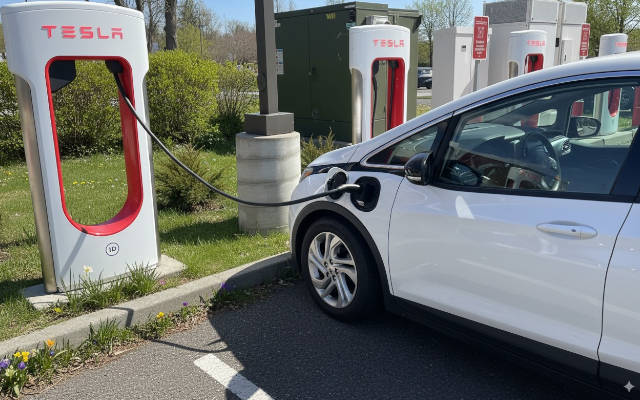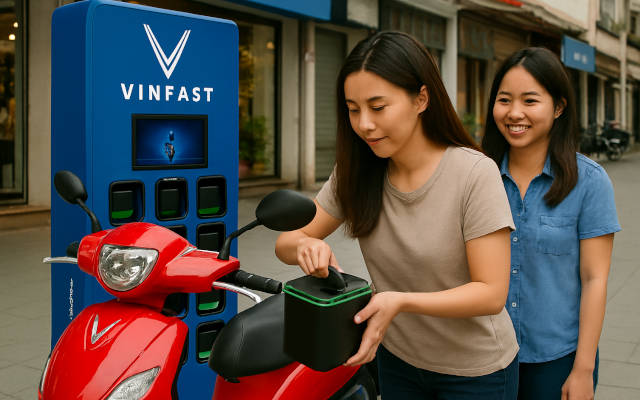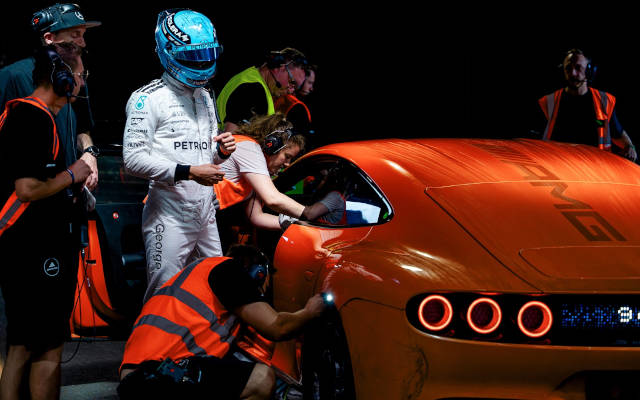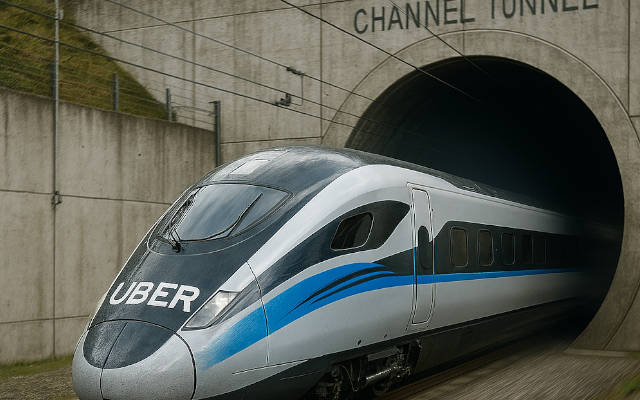 EDITOR'S PICK
EDITOR'S PICK
EV Adoption Stymied By Curious American Trait: Garage Clutter
28 Aug 2025 | Synopsis
 Telemetry's 2025 EV Charging Market Report reveals a surprising barrier to electrification: junky garages. One-third of U.S. homeowners can’t park in their own garages, limiting access to Level 2 charging. With 80% of EV charging done at home, cluttered spaces and costly installations threaten adoption. The report urges behavioral shifts and infrastructure investment to close the equity gap.
Telemetry's 2025 EV Charging Market Report reveals a surprising barrier to electrification: junky garages. One-third of U.S. homeowners can’t park in their own garages, limiting access to Level 2 charging. With 80% of EV charging done at home, cluttered spaces and costly installations threaten adoption. The report urges behavioral shifts and infrastructure investment to close the equity gap.Own a Bolt? Here Is How You Can Supercharge Today
28 Aug 2025 | Synopsis
 Chevy Bolt owners can now access Tesla Superchargers using GM's NACS-to-CCS adapter. After purchasing the dongle ($200–$300), download the Tesla app, link a payment method, and locate compatible stations. Charging to 80% costs around $20–$26. The adapter plugs into the Bolt’s front-left port, and etiquette matters—never block multiple stalls. This marks a major step toward EV charging interoperability and convenience.
Chevy Bolt owners can now access Tesla Superchargers using GM's NACS-to-CCS adapter. After purchasing the dongle ($200–$300), download the Tesla app, link a payment method, and locate compatible stations. Charging to 80% costs around $20–$26. The adapter plugs into the Bolt’s front-left port, and etiquette matters—never block multiple stalls. This marks a major step toward EV charging interoperability and convenience.VinFast Expands Electric Vehicle Incentives Nationwide, Plans Massive Battery-Swapping Network
27 Aug 2025 | Synopsis
 VinFast is launching a nationwide battery swapping network in Vietnam, aiming to deploy 150,000 stations to support its electric scooter expansion. Timed with National Day, the initiative includes new incentives and infrastructure to accelerate EV adoption. The swap stations offer fast, convenient battery replacement, reinforcing VinFast's push for sustainable urban mobility and positioning Vietnam as a leader in electric transport innovation.
VinFast is launching a nationwide battery swapping network in Vietnam, aiming to deploy 150,000 stations to support its electric scooter expansion. Timed with National Day, the initiative includes new incentives and infrastructure to accelerate EV adoption. The swap stations offer fast, convenient battery replacement, reinforcing VinFast's push for sustainable urban mobility and positioning Vietnam as a leader in electric transport innovation.The Mercedes-AMG GT XX Just Rewrote the EV Record Book
27 Aug 2025 | Synopsis
 The Mercedes-AMG GT XX Concept EV achieved 25 performance records during an eight-day testing campaign at Italy's Nardo Ring. Two prototypes covered over 24,855 miles, with one achieving 3,404 miles in 24 hours. Equipped with an 850 kW DC fast charger, the GT XX gains 124 miles of range in 10 minutes. Powered by a 1,360 hp all-electric powertrain, the GT XX demonstrates Mercedes' dedication to pushing the boundaries of EV performance.
The Mercedes-AMG GT XX Concept EV achieved 25 performance records during an eight-day testing campaign at Italy's Nardo Ring. Two prototypes covered over 24,855 miles, with one achieving 3,404 miles in 24 hours. Equipped with an 850 kW DC fast charger, the GT XX gains 124 miles of range in 10 minutes. Powered by a 1,360 hp all-electric powertrain, the GT XX demonstrates Mercedes' dedication to pushing the boundaries of EV performance.Uber Trains and the Eurostar Green Benchmark
27 Aug 2025 | Synopsis
 Eurostar aims to run on 100% renewable electricity by 2030, sourcing from wind, solar, storage, and low-carbon nuclear. Uber's planned train service is expected to follow suit as both rely on UK–EU grids. A London–Paris train trip emits just 2–11 kg CO₂e per passenger versus 50–120 kg by plane, while door-to-door times are comparable (3.5–4h by train vs. 4–5h by air). This makes high-speed rail both cleaner and faster city-centre to city-centre.
Eurostar aims to run on 100% renewable electricity by 2030, sourcing from wind, solar, storage, and low-carbon nuclear. Uber's planned train service is expected to follow suit as both rely on UK–EU grids. A London–Paris train trip emits just 2–11 kg CO₂e per passenger versus 50–120 kg by plane, while door-to-door times are comparable (3.5–4h by train vs. 4–5h by air). This makes high-speed rail both cleaner and faster city-centre to city-centre.
 Si Exclusive
Si Exclusive
Hydrogen's Flight Path: Fuel Cells, Turbines, and the Economics of Clean Aviation
10 Oct 2025 |  Aviation is shifting from Jet A to four fuel systems: electricity, hydrogen (fuel cell and combustion), SAF, and petroleum. Fuel cells suit short-haul aircraft; hydrogen combustion may power long-range jets. SAF bridges legacy fleets. Hydrogen costs - $5-$7/kg today, possibly $2/kg by 2040 - impact ticket prices and infrastructure decisions. Airport authorities, airlines, and governments will share deployment costs. Each fuel has distinct environmental pros and cons shaping aviation's net-zero future.
Aviation is shifting from Jet A to four fuel systems: electricity, hydrogen (fuel cell and combustion), SAF, and petroleum. Fuel cells suit short-haul aircraft; hydrogen combustion may power long-range jets. SAF bridges legacy fleets. Hydrogen costs - $5-$7/kg today, possibly $2/kg by 2040 - impact ticket prices and infrastructure decisions. Airport authorities, airlines, and governments will share deployment costs. Each fuel has distinct environmental pros and cons shaping aviation's net-zero future.
Ferrari Elettrica: Electrified, Not Tamed
09 Oct 2025 |  Ferrari's Elettrica EV delivers over 1,000 hp via quad motors, hitting 0-100 km/h in 2.5s with a 330+ mile range. Its 122 kWh battery sits low for balance, paired with active suspension and rear steering. Designed by LoveFrom, the four-door GT aims to preserve Ferrari's emotional DNA. Priced around $580K, it launches in 2026 in Europe and the U.S., with hybrids and ICE models still dominating until 2030
Ferrari's Elettrica EV delivers over 1,000 hp via quad motors, hitting 0-100 km/h in 2.5s with a 330+ mile range. Its 122 kWh battery sits low for balance, paired with active suspension and rear steering. Designed by LoveFrom, the four-door GT aims to preserve Ferrari's emotional DNA. Priced around $580K, it launches in 2026 in Europe and the U.S., with hybrids and ICE models still dominating until 2030
Are Self-Driving Cars Safer Than Humans? The Data May Surprise You
09 Oct 2025 |  Studies show autonomous vehicles (AVs) are generally safer than human drivers, avoiding most rear-end and broadside crashes and performing better in poor weather. However, AVs struggle with complex maneuvers like unprotected turns and low-light conditions. If AVs are just 10% safer, they could prevent 600,000 U.S. deaths over 35 years. As EVs become autonomy platforms, safety depends on how well they interpret real-world scenarios
Studies show autonomous vehicles (AVs) are generally safer than human drivers, avoiding most rear-end and broadside crashes and performing better in poor weather. However, AVs struggle with complex maneuvers like unprotected turns and low-light conditions. If AVs are just 10% safer, they could prevent 600,000 U.S. deaths over 35 years. As EVs become autonomy platforms, safety depends on how well they interpret real-world scenarios
 11 Oct 2025 15:46:09 UTC |
RECENT PODCASTS
BYD Soars - Cheaper Tesla Models - The Bolt is Back - Rivian
SEARCH RSSTREAM
 43 New Postings In Past 24 Hours
43 New Postings In Past 24 Hours
Category:mobility
Region:NoAmerica
Date:11 Oct 2025
Category:autonomy
Region:NoAmerica
Date:11 Oct 2025
Category:finance
Region:NoAmerica
Date:11 Oct 2025
Category:finance
Region:NoAmerica
Date:11 Oct 2025
Category:mobility
Region:NoAmerica
Date:11 Oct 2025
Category:mobility
Region:AsiaPacific
Date:11 Oct 2025
Category:mobility
Region:AsiaPacific
Date:11 Oct 2025
Category:mobility
Region:Europe
Date:11 Oct 2025
Category:mobility
Region:NoAmerica
Date:11 Oct 2025
Category:finance
Region:NoAmerica
Date:11 Oct 2025
Category:mobility
Region:NoAmerica
Date:11 Oct 2025
Category:autonomy
Region:NoAmerica
Date:11 Oct 2025
Category:mobility
Region:NoAmerica
Date:11 Oct 2025
Category:mobility
Region:Europe
Date:11 Oct 2025
Category:finance
Region:NoAmerica
Date:11 Oct 2025